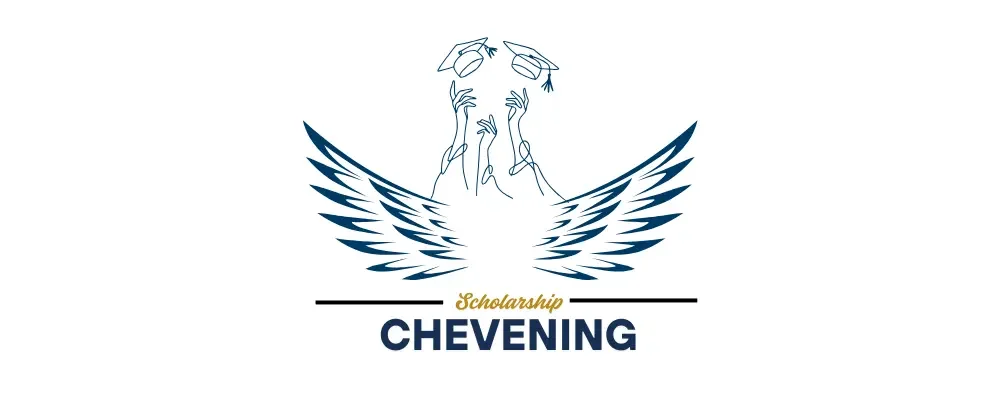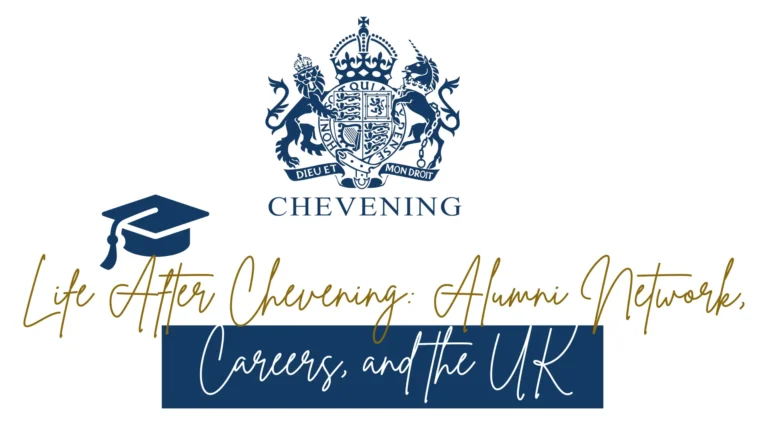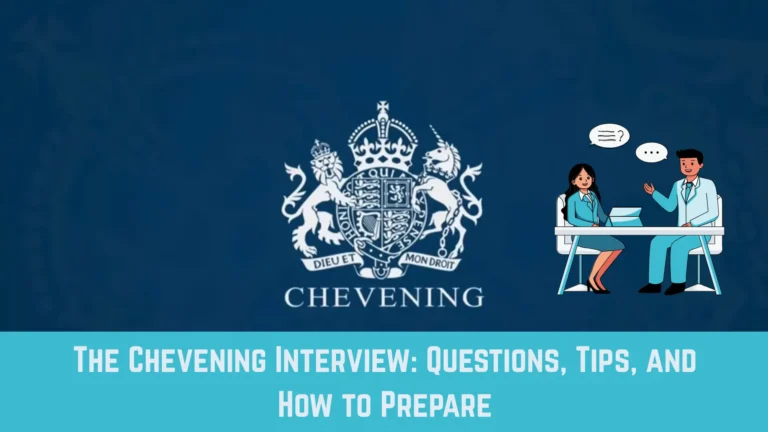Chevening Course Selection : The Strategy Behind Choosing Your Perfect UK Master’s (Don’t Make This Expensive Mistake)
Marcus had it all figured out. Oxford MSc in International Relations. That was his dream. His entire Chevening application revolved around it—his essays referenced Oxford faculty, his career plan assumed Oxford training, his interview prep centered on Oxford.
Then he got his conditional Chevening offer. Excitement turned to panic when Oxford rejected his application. His other two course choices? He’d picked them carelessly as “backups.” One didn’t even align with his career goals. The other had already closed admissions.
Marcus lost his Chevening scholarship.
Not because he wasn’t qualified. Not because his application was weak. But because he fundamentally misunderstood Chevening course selection strategy.
Here’s what nobody tells you: choosing your three universities and nine courses isn’t just about picking prestigious names from a list. It’s about strategic fit, realistic assessment, and having a coherent backup plan that still supports your career trajectory.
Let me show you how to avoid Marcus’s mistake and choose courses that maximize your chances of actually studying in the UK with full funding.
Understanding the Chevening Course Selection Structure
Before we dive into strategy, let’s clarify exactly what you’re choosing.
The Basic Framework
You must select:
- Three UK universities (your first, second, and third choice institutions)
- Three courses at each university (nine total course options)
- All courses must be eligible one-year master’s programs
This 3×3 structure is deliberate. Chevening knows that university admissions are competitive and unpredictable. They’re building redundancy into the system so you have multiple pathways to success.
Chevening scholarship course requirements are straightforward:
- Must be full-time
- Must be one year in duration (or 9-12 months)
- Must be at master’s level
- Must be at a UK higher education institution
- Must start in the autumn (September/October)

Why This Matters More Than You Think
Your Chevening university course selection directly impacts whether you actually receive funding. If you can’t secure admission to at least one of your nine chosen courses, your Chevening scholarship evaporates.
Think about that. You could win one of the world’s most prestigious scholarships and still lose it because you chose poorly.
The selection panel assumes you’ve done your homework. They expect your course choices to be realistic, strategic, and genuinely aligned with your stated career goals.
Step 1: Start With Your Career Goals (Not University Rankings)
Here’s where most people get it wrong. They open the Times Higher Education rankings, pick the top three universities, and call it done.
Big mistake.
The Right Starting Point
Chevening course selection and career goals must be tightly aligned. Before you look at a single university website, answer these questions:
What specific skills gaps are you trying to fill? Example: “I need quantitative data analysis skills and policy design frameworks to transition from program implementation to policy advisory roles.”
What sector are you targeting? Example: “Climate finance in emerging markets, specifically renewable energy project financing.”
What kind of professional network do you need? Example: “Connections with UK renewable energy companies and multilateral development banks.”
How will this degree change what you can do professionally? Example: “It will qualify me to lead our ministry’s green bond issuance program and engage with international climate finance mechanisms.”
See how specific those are? That specificity guides your course selection in ways that vague goals (“improve education in my country”) never could.
The Career-First Framework
Chevening course selection importance stems from this reality: your course choice directly enables or limits your career plan. If there’s misalignment between your stated career trajectory and your chosen courses, interviewers will notice and question your strategic thinking.
| Career Goal | Appropriate Course Types | Poor Course Matches |
|---|---|---|
| Environmental policy leadership | Environmental Policy, Climate Change Economics, Sustainable Development | Generic MBA, International Relations |
| EdTech innovation | Education Technology, Digital Learning, Educational Leadership | Traditional Education Studies without tech focus |
| Healthcare finance reform | Health Economics, Public Health Policy, Global Health Management | Clinical Medicine, Nursing Studies |
| Agricultural development | Food Security, Rural Development, Agricultural Economics | General Economics, Business Administration |
| Digital governance | E-Governance, Digital Policy, Technology & Society | Computer Science, Software Engineering |
Step 2: Research Programs (Not Just Universities)
Once you’re clear on your career goals, it’s time to research. But not the way you think.
Beyond the Brochure
How to choose courses for Chevening requires going deeper than university marketing materials. You need to understand:
Specific modules and curriculum: Don’t just read the program overview. Look at the actual course modules. Do they teach what you need to learn?
Example: Two universities might both offer “Public Policy” degrees, but one focuses on UK domestic policy while the other specializes in developing country contexts. Guess which one better serves someone returning to Pakistan or Nigeria?
Faculty expertise: Who’s teaching this program? What’s their research focus? Have they published work relevant to your career interests?
Industry connections: What partnerships does the program have? Do they facilitate internships or placements? Do they bring in practitioners as guest lecturers?
Alumni outcomes: Where do graduates of this program end up working? Are those career paths similar to what you’re targeting?
Chevening master’s course selection should be informed by program quality, not just university prestige.
Using the Chevening Course Finder
The Chevening scholarship course finder is your official starting point. This tool on the Chevening website lets you search eligible courses by:
- Subject area
- University
- Location
- Keywords
Start here to generate your initial list, then dig deeper into each program.
Chevening scholarship course finder 2025 tips:
- Search by subject area first to see the full range of options
- Don’t limit yourself to universities you’ve heard of
- Check multiple related search terms (e.g., “climate policy” and “environmental governance” and “sustainability”)
- Export your findings and create a comparison spreadsheet
Step 3: Create Your Strategic Three-Tier System
This is the strategy that separates successful scholars from disappointed applicants.
Tier 1: Reach University
This is your dream school. It’s competitive, prestigious, and you’d be thrilled to attend. But admission isn’t guaranteed.
Characteristics:
- Highly ranked in your field
- Competitive admission (typically 5-15% acceptance rate)
- World-renowned faculty
- Exactly what you’d hoped for
Your approach: Put your strongest effort into this application, but don’t assume success. Choose three courses here that genuinely excite you.
Tier 2: Target University
This is a strong university where you have realistic admission chances based on your profile.
Characteristics:
- Excellent reputation in your field
- Moderate admission rates (20-40%)
- Strong course aligned with career goals
- You’d be genuinely happy to attend
Your approach: This is your strategic core. Choose courses where your profile is competitive and admission is probable.
Tier 3: Safety University
This is a solid university where admission is highly likely based on your credentials.
Characteristics:
- Good reputation (doesn’t need to be top 10)
- Course that still supports your career plan
- Higher admission rates (40-60%+)
- You can articulate why this course fits your goals
Your approach: Don’t be a snob. A “safety” that gets you into the UK with Chevening funding beats a “reach” that rejects you and costs you the entire scholarship.

Step 4: Choose Specific Courses Strategically
Within each university, you’re selecting three courses. This isn’t random—it’s strategic diversification.
The Three-Course Strategy at Each University
Course A: Perfect Fit Your ideal program at this university. Best alignment with career goals, preferred specialization, dream faculty.
Course B: Strong Alternative Slightly different angle but still excellent fit. Maybe broader or narrower focus, but definitely supports your career trajectory.
Course C: Related Option Still relevant to your goals but approaches from different angle. Provides genuine backup without compromising your career plan.
Chevening alternative courses shouldn’t be random. They should offer different pathways to the same destination.
Example: Environmental Policy Focus
At London School of Economics (Tier 1):
- MSc Environmental Economics and Climate Change (perfect fit)
- MSc Environment and Development (strong alternative)
- MSc Global Development Policy (related option)
At University of Edinburgh (Tier 2):
- MSc Environment, Culture and Society (perfect fit)
- MSc Sustainable Energy Systems (strong alternative)
- MSc Carbon Management (related option)
At University of Sussex (Tier 3):
- MA Environment, Development and Policy (perfect fit)
- MA Climate Change and Policy (strong alternative)
- MA International Development (related option)
Notice how all nine courses relate to the applicant’s environmental policy career goals but offer different emphases? That’s strategic selection.
Step 5: Verify Eligibility and Practical Considerations
Before finalizing choices, check the practical details that can derail your plans.
Chevening Course Eligibility Criteria Checklist
Program length: Must be one year (some master’s programs are 2 years—these don’t qualify)
Start date: Must begin in September/October (not January starts)
Study mode: Must be full-time (part-time doesn’t qualify)
Degree level: Must be master’s level (postgraduate diplomas don’t count)
Institution type: Must be recognized UK higher education institution
Chevening course duration and selection is non-negotiable—if a program is 15 months or 2 years, it’s not eligible regardless of quality.
Practical Considerations
Admission requirements: Can you realistically meet them? Check:
- Minimum GPA/degree classification
- English language scores (IELTS/TOEFL requirements)
- Work experience preferences
- Prerequisites or required background
Application deadlines: Do they align with Chevening timeline? Most UK universities have rolling admissions, but some programs have early deadlines.
Tuition fees: While Chevening covers tuition, double-check that your chosen programs fall within Chevening’s coverage limits (rarely an issue, but worth confirming).
| Factor | What to Check | Why It Matters |
|---|---|---|
| Program Length | Exactly 12 months (or 9-12 months) | Outside this range = ineligible |
| Start Date | September or October start | January/April starts don’t work |
| Study Mode | Full-time only | Part-time programs excluded |
| Admission Requirements | Your profile meets minimums | No point choosing if you can’t get admitted |
| English Requirements | IELTS/TOEFL scores you can achieve | Unrealistic standards = wasted choice |
| Application Deadlines | Aligns with Chevening timeline | Missing deadline = forfeiting option |
Step 6: Research Faculty and Specializations
This is where you separate yourself from generic applicants.
Going Deep on Faculty Research
Chevening course selection advice from successful scholars emphasizes this: mention specific faculty in your application essays.
When you write about why you chose a particular university and course, being able to say:
“Professor Sarah Chen’s research on climate adaptation financing in South Asia directly addresses the challenges I face in implementing Pakistan’s National Climate Change Policy. Her 2023 paper on risk mitigation strategies for green bonds in emerging markets provides exactly the framework I need to strengthen our ministry’s approach.”
That specificity shows you’ve done real research. It demonstrates genuine interest. And it makes your course choice seem strategic rather than random.
How to Research Faculty
- Visit the program’s faculty page
- Read recent publications from 2-3 key professors
- Look for research that connects to your work or career goals
- Note specific projects, methodologies, or findings that resonate
- Consider who you’d want as a dissertation supervisor
This research serves double duty: it informs your course selection AND strengthens your application essays.
Step 7: Understand Course Change Rules
Chevening scholarship course change rules are strict but not impossible to navigate.
Before You Submit Your Chevening Application
You can change your course selections as many times as you want before the application deadline. Take advantage of this. Do thorough research and revise your choices until you’re confident.
After You Submit
Once you submit your Chevening application, you typically cannot change your three universities. However, you may be able to adjust the specific courses at each institution in certain circumstances. Contact your local Chevening office for guidance if your situation changes.
After Receiving Conditional Offer
If you receive a conditional Chevening offer, you must apply to your selected universities and courses. If all nine reject you, you’ll need to request permission to apply to alternative courses/universities—which is granted on a case-by-case basis and far from guaranteed.
Chevening course selection mistakes include assuming you can easily change courses later. You usually can’t. Get it right the first time.
Common Course Selection Mistakes (And How to Avoid Them)
Let’s talk about the errors that tank otherwise strong applications.
Mistake #1: Prestige Over Fit
The error: Choosing Oxford, Cambridge, and LSE regardless of whether their programs actually match your goals.
Why it fails: If the courses don’t align with your stated career plan, interview panels will question your judgment. Plus, these ultra-competitive programs might all reject you.
The fix: Choose universities where the course content genuinely matches what you need to learn. A lower-ranked university with the perfect program beats a prestigious university with a mediocre fit.
Mistake #2: No Real Safety Option
The error: Choosing three highly competitive universities because you’re confident in your credentials.
Why it fails: UK admissions are unpredictable. Outstanding candidates get rejected from all three choices every year, losing their Chevening funding.
The fix: Include at least one university where admission is highly probable. Swallow your ego—studying at a “good” university beats not studying at all.
Mistake #3: Incoherent Course Mix
The error: Choosing courses across completely different fields (e.g., Environmental Science, Finance, and International Relations).
Why it fails: Shows lack of clear direction. Makes your career plan seem unfocused. Raises questions about your actual goals.
The fix: All nine courses should relate to your career trajectory, even if from different angles.
Mistake #4: Ignoring Admission Requirements
The error: Choosing courses requiring 3.5+ GPA when you have 3.0, or programs wanting 5+ years work experience when you have 2.
Why it fails: Wastes your choice on a course you’ll never get admitted to.
The fix: Honestly assess your profile against admission requirements. Choose courses where you meet or exceed the preferred criteria.
Mistake #5: Last-Minute Course Selection
The error: Spending months on essays but only a few hours researching courses.
Why it fails: Results in poorly researched choices that don’t truly fit your needs or don’t have realistic admission chances.
The fix: Start course research early. Spend at least 20-30 hours thoroughly researching programs before finalizing selections.
Best Courses for Chevening Scholarship (By Field)
Let’s get practical. Here are popular course areas among successful Chevening scholars:
Development and Policy
Top programs typically include:
- International Development (various universities)
- Public Policy (LSE, Oxford, UCL)
- Development Economics (SOAS, Sussex)
- Global Governance (Oxford, King’s College)
Why popular: Direct relevance to governance and social change work in developing countries.
Climate and Environment
Top programs typically include:
- Environmental Policy (LSE, Oxford)
- Climate Change (various universities)
- Sustainable Development (multiple institutions)
- Energy and Environment (UCL, Imperial)
Why popular: Critical global issue with growing career opportunities.
Education
Top programs typically include:
- Education Policy (Cambridge, Oxford)
- International Education (UCL)
- Higher Education (various universities)
- Comparative Education (Oxford, Cambridge)
Why popular: Education reform is priority in many Chevening countries.
Health and Healthcare
Top programs typically include:
- Public Health (various universities)
- Global Health (Imperial, LSHTM)
- Health Economics (York, LSE)
- Healthcare Management (King’s, Manchester)
Why popular: Universal need for healthcare system improvement.
Economics and Finance
Top programs typically include:
- Development Economics (Oxford, LSE)
- International Economics (Sussex, Warwick)
- Finance (Warwick, Imperial, LSE)
- Economic Policy (various universities)
Why popular: Technical skills highly valued in both public and private sectors.
| Field | Typical UK Universities | Career Paths | Admission Competitiveness |
|---|---|---|---|
| Development/Policy | Oxford, LSE, SOAS, Sussex, IDS | Government, NGOs, multilateral orgs | High to Very High |
| Climate/Environment | LSE, Oxford, Imperial, Edinburgh | Environmental agencies, policy roles | High |
| Education | Cambridge, Oxford, UCL, IoE | Education ministries, ed-tech, academia | Medium to High |
| Health/Public Health | LSHTM, Imperial, Edinburgh | Health ministries, WHO, healthcare orgs | Medium to High |
| Economics/Finance | LSE, Oxford, Warwick | Central banks, finance ministries, consulting | Very High |
Using the Chevening Online Course Selection Tool
The Chevening online course selection tool (course finder) on the official website is your starting point, but don’t let it be your ending point.
How to Maximize the Course Finder
Step 1: Start Broad Search by general subject area to see the full range of options.
Step 2: Narrow by Keywords Use specific terms related to your career goals (e.g., “renewable energy” not just “environment”).
Step 3: Don’t Filter Too Aggressively Look at universities across rankings. You might discover perfect programs at universities you hadn’t considered.
Step 4: Export and Compare Create a spreadsheet comparing:
- Course content and modules
- Faculty expertise
- Admission requirements
- Your fit for each program
Step 5: Go Beyond the Tool Once you have a shortlist, visit each university’s actual course page for detailed information the finder doesn’t include.
Preparing for Chevening Course Application
Preparing for Chevening course application means being ready to apply to universities immediately after receiving your conditional Chevening offer.
Your Post-Conditional Offer Timeline
Receive conditional offer (typically June): Celebrate! But briefly—work begins immediately.
Apply to universities (June-July): You typically have 4-6 weeks to apply to your chosen courses. Time is tight.
Receive university offers (July-August): Universities respond with offers (conditional or unconditional).
Submit unconditional offer to Chevening (mid-July deadline): You must upload proof of at least one unconditional university offer by Chevening’s deadline.
The critical insight: You need to move fast. Have your university applications mostly prepared before you even receive your Chevening conditional offer.
Materials to Prepare in Advance
Academic documents:
- Degree certificates
- Transcripts (official copies)
- Degree equivalency evaluation if needed
English language test:
- IELTS or TOEFL scores meeting university requirements
- Some universities exempt Chevening scholars—check policies
Personal statement:
- Draft versions for each course (can adapt from Chevening essays)
- Explain why this specific program at this specific university
References:
- Can often use same referees as Chevening application
- Brief them that university applications are coming
CV/Resume:
- Updated with latest accomplishments
- Formatted professionally

Advanced Strategy: Aligning Everything
Here’s the meta-strategy that ties everything together.
Your Application Should Tell One Coherent Story
Your CV shows your experience and progression ↓ Your essays explain how that experience shaped your goals ↓ Your course selections demonstrate how UK education fills specific gaps ↓ Your career plan shows how you’ll apply that education ↓ Your interview answers reinforce this entire narrative
Chevening scholarship course application strategy means every piece supports every other piece. Your course choices can’t be an afterthought—they’re integral to your overall narrative.
The Interview Connection
When interviewers ask, “Why did you choose these courses?” you should be able to articulate:
- Specific skills/knowledge gaps they address
- How course content connects to your career goals
- Why UK institutions specifically (not just “quality education”)
- What you’ll do with that education upon return
- Why these specific universities and programs
Vague answers reveal poor preparation. Specific answers demonstrate strategic thinking.
Your Course Selection Action Plan
Let’s make this actionable with a timeline.
3-4 Months Before Application Deadline
Week 1-2: Career Clarification
- Write detailed career goals (short, medium, long-term)
- Identify specific skills/knowledge gaps
- List must-have course content/experiences
Week 3-4: Initial Research
- Use Chevening course finder
- Identify 15-20 potential programs
- Create comparison spreadsheet
Week 5-6: Deep Research
- Study course modules in detail
- Research faculty at top choices
- Check admission requirements
- Verify program eligibility (length, start date, etc.)
Week 7-8: Strategic Selection
- Narrow to final 9 courses across 3 universities
- Ensure three-tier structure (reach/target/safety)
- Verify coherence across all choices
- Check alignment with career plan
2 Months Before Deadline
Refine selections:
- Read faculty publications
- Look at alumni outcomes
- Finalize your 3×3 grid
Integrate into application:
- Reference specific courses in essays
- Explain selections clearly
- Demonstrate research depth
After Conditional Offer
Immediate action:
- Gather all university application materials
- Take English test if not done
- Draft personal statements for each university
- Apply to all nine courses ASAP
Final Thoughts: Choose Wisely, Choose Strategically
Chevening course selection isn’t just an administrative task—it’s a strategic decision that determines whether you actually receive funding and how well your UK education serves your career goals.
The difference between applicants who study in the UK and those who lose scholarships often comes down to this choice. Not because they weren’t qualified, but because they chose poorly.
Don’t be like Marcus from our opening story. Don’t build your entire application around a single dream school, assuming everything will work out.
Instead:
- Start with your career goals
- Research thoroughly (20-30 hours minimum)
- Create a three-tier university strategy
- Choose courses that all support your trajectory
- Verify eligibility and admission requirements
- Prepare university applications before you need them
The perfect course choice isn’t necessarily at the highest-ranked university. It’s the one that best prepares you to achieve your specific career goals and that you can actually get admitted to.
Choose strategically. Choose wisely. Choose like your entire scholarship depends on it.
Because it does.
Important Note: Course availability and eligibility criteria can change from year to year. Always verify current information on the official Chevening website and individual university websites before finalizing your selections.







